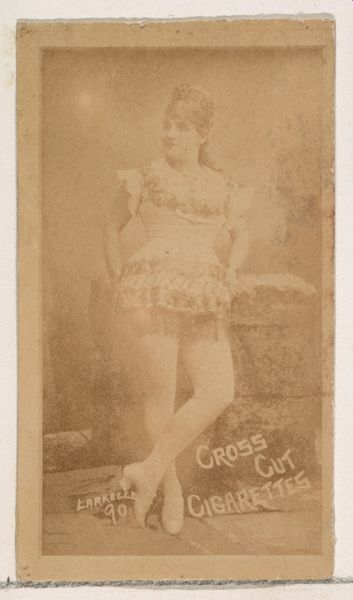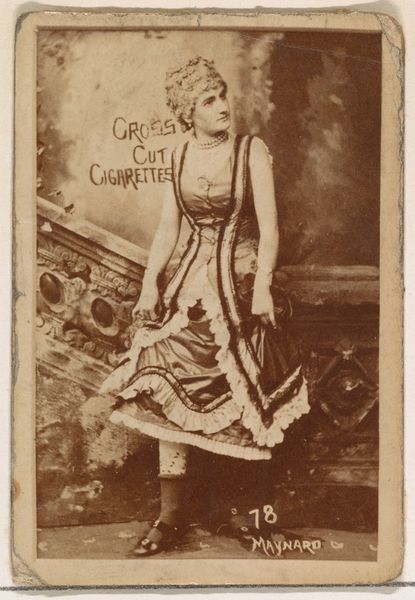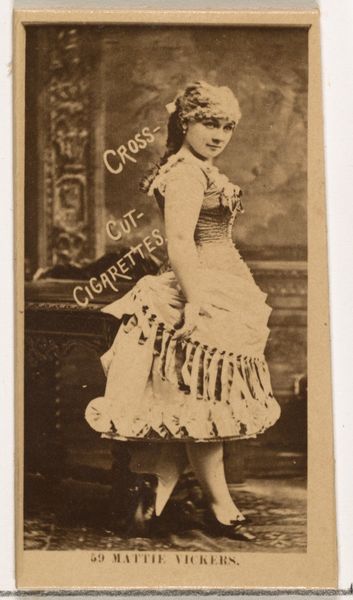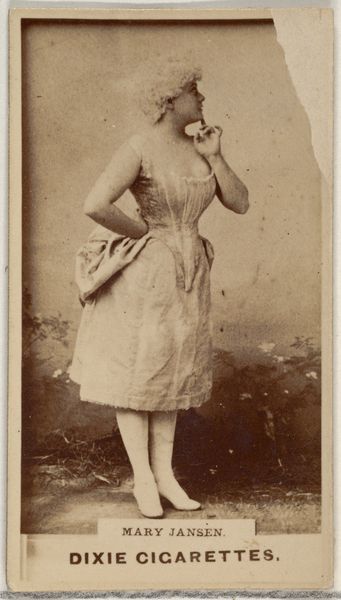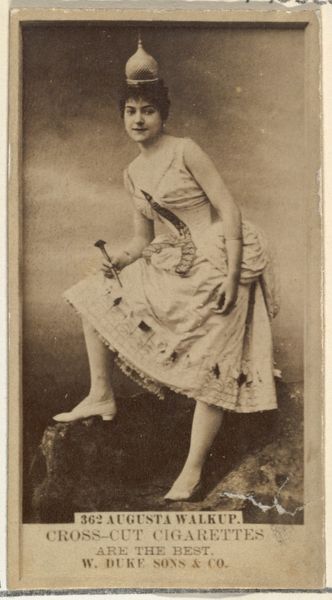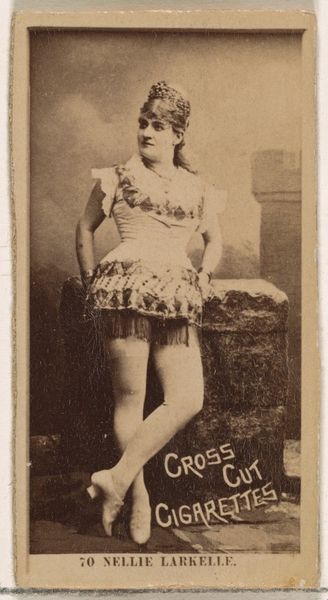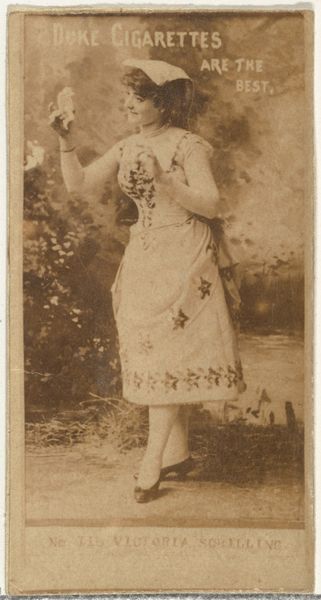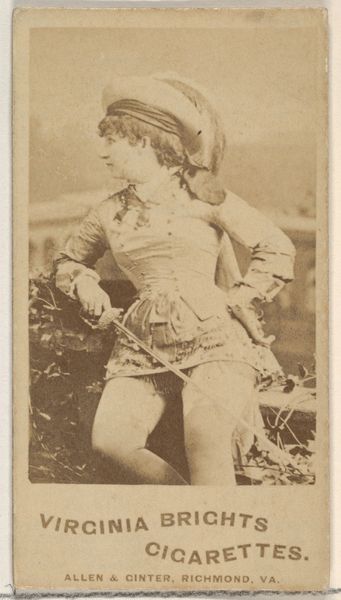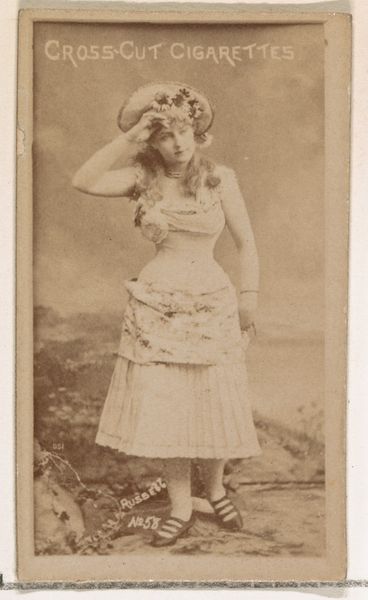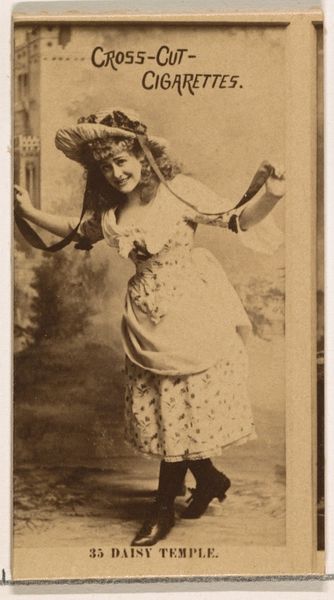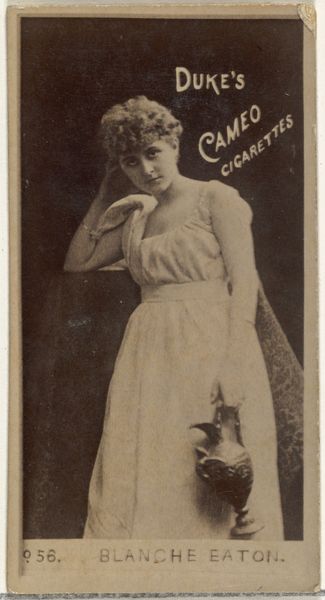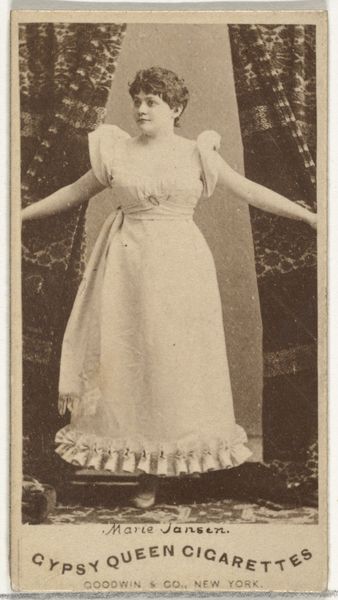
Card Number 20, Miss Seaman, from the Actors and Actresses series (N145-2) issued by Duke Sons & Co. to promote Cross Cut Cigarettes 1880s
0:00
0:00
drawing, print, photography
#
portrait
#
drawing
# print
#
figuration
#
photography
#
19th century
Dimensions: Sheet: 2 5/8 × 1 7/16 in. (6.6 × 3.7 cm)
Copyright: Public Domain
Editor: Here we have "Card Number 20, Miss Seaman," one of the cards from the "Actors and Actresses" series created by W. Duke, Sons & Co. in the 1880s as cigarette advertisements. It seems to combine photography and print. What strikes me is its overt commercial purpose; how does that impact how we see it as art? Curator: Precisely. It's easy to overlook the crucial point of *why* this image was made. These cards weren't conceived as fine art, but rather as a mass-produced advertising tool. The materiality of this object—cheap paper stock, mass printing—tells a story of industrial production and consumption habits. The image is inextricably linked to the production of cigarettes. How does this mass production change its value? Editor: So the material nature of it is key. What about Miss Seaman herself? Is she just another commodity here? Curator: Absolutely. She becomes a part of the advertising machine. We can examine the social context of actresses during the 1880s and understand how their image, and by extension their labor, was exploited for commercial gain. The photograph flattens her into a desirable object linked to the pleasure of smoking. The means of production are quite deliberate: How does it normalize both tobacco use and female objectification? Editor: It's interesting to think about how the very creation of this piece involved exploiting both material resources *and* human labor. Were these cards popular at the time? Curator: Hugely! Their popularity speaks to the rise of consumer culture and the pervasive nature of advertising in everyday life. Thinking about it in the art context helps me rethink boundaries between the high art and commercial art and maybe to scrutinize our consumption culture, even now. Editor: Right, I see how a seemingly simple image can reveal so much about the industrial and social forces at play in the late 19th century. Curator: Indeed. By examining the production and circulation of this seemingly minor object, we gain insights into larger systems of labor, value, and power, where art, commodities, and labor intersect.
Comments
No comments
Be the first to comment and join the conversation on the ultimate creative platform.
